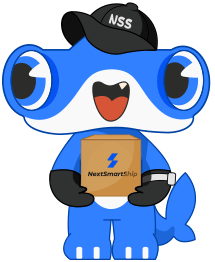Data could be the make-or-break difference for your online store. Without data, you will not know what’s working, what isn’t, or what success looks like. What’s worse is you won’t even know where to improve or focus your efforts.
To accelerate growth in your eCommerce business, you need to:
- Set measurable goals by identifying your key performance indicators (KPIs)
- Identify the metrics needed to track these KPIs
- Monitor performance while making necessary adjustments
So what exactly are KPIs and which ones are critical to your eCommerce business?
Don’t worry, we got you covered!
Table of Contents
- What are eCommerce KPIs?
- Why are KPIs Important?
- The eCommerce KPIs that Matter
- Sales KPIs
- Marketing KPIs
- Shipping and Logistics KPI
- How NextSmartShip Helps You Track KPIs

A key performance indicator is a metric that helps you identify the most important aspects of your business in a way that helps you determine if you’re achieving your principal objectives.
They tell you where you are and the actions you need to take to achieve your goals. They help business owners make more informed decisions about conversions, marketing, revenue, operations as well as customer satisfaction.
The eCommerce KPIs that Matter
Now let’s look at the most widely used KPIs that e Commerce businesses use to assess their performance. It’s also worth noting that the KPIs on this list are not exhaustive because there’s an infinite number of indicators to be used depending on your business goals.
Sales KPIs
Sales KPIs show how your business is doing when it comes to conversions and revenue. Here are a few examples:
Average order value
The average order value (AOV) is used to track the average dollar spent when a customer places an order on your site or app. It helps to evaluate your store’s pricing strategy and also to understand your customer’s buying habits.
To calculate AOV, use this formula:
AOV = Revenue/ Number of orders
Conversion rate
This is the percentage of users on your site who turn from site browsers into actual buyers. To calculate your conversion rate, here’s the formula:
Conversion rate= ( Conversions/Total number of visitors) X 100%
Customer lifetime value
The customer lifetime value (CLV) shows you how much a customer spent with your business over time. This helps you identify ways to focus on building customer loyalty and attract repeat sales through upselling or subscriptions to drive growth. To calculate CLV:
Customer Lifetime Value = Average Value of Sale X Number of Transactions X Retention Time Period
Cost of goods sold
Cost of goods sold (COGS) shows you just how much you spend to sell a product. This cost includes the cost of raw materials as well as the labor used to create it. To get your COGS, use this formula:
COGS= Starting inventory + Purchases during the given period – Ending inventory
Marketing KPIs
Marketing KPIs helps you understand the products that are selling, why they are being bought and the demographic of buyers. These KPIs inform the product development stage and have an impact on the sales KPIs. They include:
Site traffic
Site traffic includes the number of visits you get to your online store. It may come in the form of organic search, social media clicks, affiliates or through other channels. Use Google Analytics to measure your site traffic and you can also use it to compare your site traffic growth rate.
Bounce rate
Bounce rate is the number of site visitors who leave your web page without taking any action. This includes making a purchase, filling out a form or clicking on a link. If you have a high bounce rate it could mean that you may be experiencing issues with your site, page layout, copywriting or form fields.
Here is the formula for calculating bounce rate:
Bounce rate = Total one-page visits /Total entrance visits
Return on ad spend
Return on ad spend is the amount of revenue generated from every dollar you spend on advertising. To calculate this, use this formula:
ROAS = Campaign revenue ÷ Cost of campaign
Social media engagement
Social media engagement includes the number of people who interact with your brand on any social media channel. Social media metrics can be used to track your reach, impressions, and followers. You could leverage the built-in native reporting found in most social media platforms or utilize social media tools to help you out with scheduling and analysis.
Shipping and Logistics KPI
The KPIs for shipping and logistics show you the customer relationship journey from when they make an order to when they receive their product. They include:
Inventory turnover rate
Inventory turnover rate calculates the number of times your inventory is sold and replaced in a given period. It helps you determine product performance and how it relates to your warehouse costs.
It also helps you compare the fast movers from the slow movers. Use the formula below to calculate your inventory turnover rate:
Inventory turnover = Cost of goods sold/ Average inventory value
Order accuracy rate
This is the percentage of all the orders that get shipped to their destination without any errors. This KPI impacts customer satisfaction. To calculate order accuracy level:
Order accuracy rate = (Total orders fulfilled accurately ÷ Total orders fulfilled) X 100
How NextSmartShip Helps You Track KPIs
Partnering with a fulfillment service provider like NextSmartShip helps you monitor inventory turnover rate. It also helps you improve your order accuracy rates by using the right technology to keep you updated about your inventory and also optimizing your supply chain for you.
Once you outsource fulfillment to NextSmartShip, we go beyond picking and packing goods for you. Helping you exceed customer expectations by providing a memorable shopping experience is at our core. We ensure you meet your brand awareness goals by providing customized packaging services and ensuring faster shipping while still keeping costs down. The best part is NextSmartShip handles return management for you so you can have more time to focus on your product.
To learn more about how NextSmartShip can help you with your fulfillment needs and provide data on your most important KPIs, contact us today for custom solutions.
A key performance indicator is a metric that helps you identify the most important aspects of your business in a way that helps you determine if you’re achieving your principal objectives.
They tell you where you are and the actions you need to take to achieve your goals. They help business owners make more informed decisions about conversions, marketing, revenue, operations as well as customer satisfaction.
The eCommerce KPIs that Matter
Now let’s look at the most widely used KPIs that e Commerce businesses use to assess their performance. It’s also worth noting that the KPIs on this list are not exhaustive because there’s an infinite number of indicators to be used depending on your business goals.
Sales KPIs
Sales KPIs show how your business is doing when it comes to conversions and revenue. Here are a few examples:
Average order value
The average order value (AOV) is used to track the average dollar spent when a customer places an order on your site or app. It helps to evaluate your store’s pricing strategy and also to understand your customer’s buying habits.
To calculate AOV, use this formula:
AOV = Revenue/ Number of orders
Conversion rate
This is the percentage of users on your site who turn from site browsers into actual buyers. To calculate your conversion rate, here’s the formula:
Conversion rate= ( Conversions/Total number of visitors) X 100%
Customer lifetime value
The customer lifetime value (CLV) shows you how much a customer spent with your business over time. This helps you identify ways to focus on building customer loyalty and attract repeat sales through upselling or subscriptions to drive growth. To calculate CLV:
Customer Lifetime Value = Average Value of Sale X Number of Transactions X Retention Time Period
Cost of goods sold
Cost of goods sold (COGS) shows you just how much you spend to sell a product. This cost includes the cost of raw materials as well as the labor used to create it. To get your COGS, use this formula:
COGS= Starting inventory + Purchases during the given period – Ending inventory
Marketing KPIs
Marketing KPIs helps you understand the products that are selling, why they are being bought and the demographic of buyers. These KPIs inform the product development stage and have an impact on the sales KPIs. They include:
Site traffic
Site traffic includes the number of visits you get to your online store. It may come in the form of organic search, social media clicks, affiliates or through other channels. Use Google Analytics to measure your site traffic and you can also use it to compare your site traffic growth rate.
Bounce rate
Bounce rate is the number of site visitors who leave your web page without taking any action. This includes making a purchase, filling out a form or clicking on a link. If you have a high bounce rate it could mean that you may be experiencing issues with your site, page layout, copywriting or form fields.
Here is the formula for calculating bounce rate:
Bounce rate = Total one-page visits /Total entrance visits
Return on ad spend
Return on ad spend is the amount of revenue generated from every dollar you spend on advertising. To calculate this, use this formula:
ROAS = Campaign revenue ÷ Cost of campaign
Social media engagement
Social media engagement includes the number of people who interact with your brand on any social media channel. Social media metrics can be used to track your reach, impressions, and followers. You could leverage the built-in native reporting found in most social media platforms or utilize social media tools to help you out with scheduling and analysis.
Shipping and Logistics KPI
The KPIs for shipping and logistics show you the customer relationship journey from when they make an order to when they receive their product. They include:
Inventory turnover rate
Inventory turnover rate calculates the number of times your inventory is sold and replaced in a given period. It helps you determine product performance and how it relates to your warehouse costs.
It also helps you compare the fast movers from the slow movers. Use the formula below to calculate your inventory turnover rate:
Inventory turnover = Cost of goods sold/ Average inventory value
Order accuracy rate
This is the percentage of all the orders that get shipped to their destination without any errors. This KPI impacts customer satisfaction. To calculate order accuracy level:
Order accuracy rate = (Total orders fulfilled accurately ÷ Total orders fulfilled) X 100
How NextSmartShip Helps You Track KPIs
Partnering with a fulfillment service provider like NextSmartShip helps you monitor inventory turnover rate. It also helps you improve your order accuracy rates by using the right technology to keep you updated about your inventory and also optimizing your supply chain for you.
Once you outsource fulfillment to NextSmartShip, we go beyond picking and packing goods for you. Helping you exceed customer expectations by providing a memorable shopping experience is at our core. We ensure you meet your brand awareness goals by providing customized packaging services and ensuring faster shipping while still keeping costs down. The best part is NextSmartShip handles return management for you so you can have more time to focus on your product.
To learn more about how NextSmartShip can help you with your fulfillment needs and provide data on your most important KPIs, contact us today for custom solutions.




